Life
Street pursued classical studies. He studied law, and was admitted to the bar and began practice in Poughkeepsie. He was District Attorney for the Second District (comprising Rockland, Orange, Ulster, Dutchess and Delaware counties) from February 1810 to February 1811, and from March 1813 to February 1815. In the War of 1812 he served as lieutenant colonel of militia.

Admission to the bar in the United States is the granting of permission by a particular court system to a lawyer to practice law in the jurisdiction and before those courts. Each U.S. state and similar jurisdiction has its own court system and sets its own rules for bar admission, which can lead to different admission standards among states. In most cases, a person is "admitted" or "called" to the bar of the highest court in the jurisdiction and is thereby authorized to practice law in the jurisdiction. In addition, Federal Courts of the United States, although often overlapping in admission standards with states, set their own requirements for practice in each of those courts.
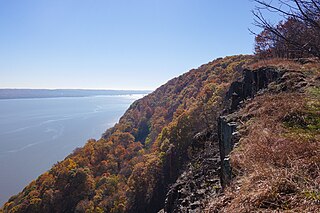
Rockland County is the southernmost county on the west side of the Hudson River in the U.S. state of New York, part of the New York City Metropolitan Statistical Area. The county's population, as of the 2010 census, was 311,687, increasing by 5.5% to a 2017 Census estimate of 328,868, making it the third-most densely populated county outside New York City within New York State. The county seat is New City. Rockland County is a suburb of New York City that borders the boroughs about 9 miles northwest of the city at their closest points, and is accessible via the New York State Thruway, after 10 exits. The name derives from "rocky land", as the area has been aptly described.

Orange County is a county located in the U.S. state of New York. As of the 2010 census, the population was 372,813. The county seat is Goshen. This county was first created in 1683 and reorganized with its present boundaries in 1798.
Street was elected as a Federalist to the 16th United States Congress, holding office from March 4, 1819, to March 3, 1821. In 1823, he removed to Monticello where he continued the practice of law until his death. He was interred in Poughkeepsie.

The Sixteenth United States Congress was a meeting of the legislative branch of the United States federal government, consisting of the United States Senate and the United States House of Representatives. It met in Washington, D.C. from March 4, 1819, to March 4, 1821, during the third and fourth years of James Monroe's presidency. The apportionment of seats in the House of Representatives was based on the Third Census of the United States in 1810. Both chambers had a Democratic-Republican majority.
He was the father of poet, author and New York State Librarian Alfred Billings Street, and grandfather of Anna Morton, wife of Vice President Levi P. Morton.

Alfred Billings Street was an American author and poet.

Anna Livingston Reade Street Morton was the second wife of United States Vice President Levi P. Morton. She was known as Anna Street Morton.
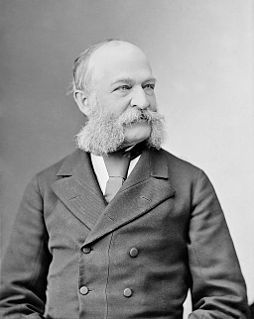
Levi Parsons Morton was the 22nd vice president of the United States from 1889 to 1893. He also served as United States ambassador to France, as a representative from New York, and as the 31st governor of New York.
This page is based on this
Wikipedia article Text is available under the
CC BY-SA 4.0 license; additional terms may apply.
Images, videos and audio are available under their respective licenses.
William Nelson was an American lawyer and judge from Westchester County, New York. He represented New York in the U.S. Congress from 1847 to 1851.
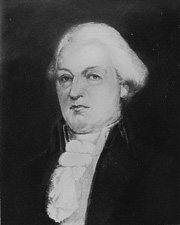
Theodorus Bailey was an American lawyer and politician from Poughkeepsie, New York, who represented New York in both the U.S. House and Senate.

George Russell Stobbs was an attorney and politician. A Republican. He served as a member of the United States House of Representatives from Massachusetts for three terms.

Samuel Beardsley was an American attorney, judge and legislator from New York. During his career he served as a member of the United States House of Representatives, New York Attorney General, United States Attorney for the Northern District of New York, a member of the New York State Senate, and a justice of the New York Supreme Court.
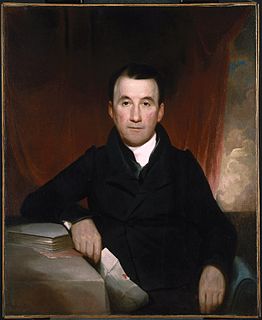
Jonas Platt was an American lawyer and politician from New York. He was a member of the United States House of Representatives.
David Brooks was an officer in the Continental Army in the American Revolution and a United States representative from New York.

Gilbert Dean was an American lawyer and politician from New York.
James Emott was an American lawyer and politician from New York.

William Ferguson Slemons was a U.S. Representative from Arkansas.
Alva Lysander Hager was a three-term Republican U.S. Representative from Iowa's 9th congressional district in the 1890s.
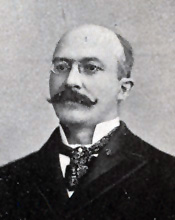
Alexander Merrill Hardy was a U.S. Representative from Indiana.

Charles Herman Ruggles was an American lawyer and politician who was a U.S. Representative from New York and Chief Judge of the New York Court of Appeals.

George Monroe Beebe was an American politician and a U.S. Representative from New York.
George Ogilvie Belden was an American politician and a U.S. Representative from New York.

Emery Davis Potter was a U.S. Representative from Ohio.
James William Gazlay was a U.S. Representative from Ohio.

Lionel Allen Sheldon was a U.S. Representative from Louisiana. He was Governor of New Mexico Territory from 1881 to 1885.
Charles Johnston was a U.S. Representative from New York.




















